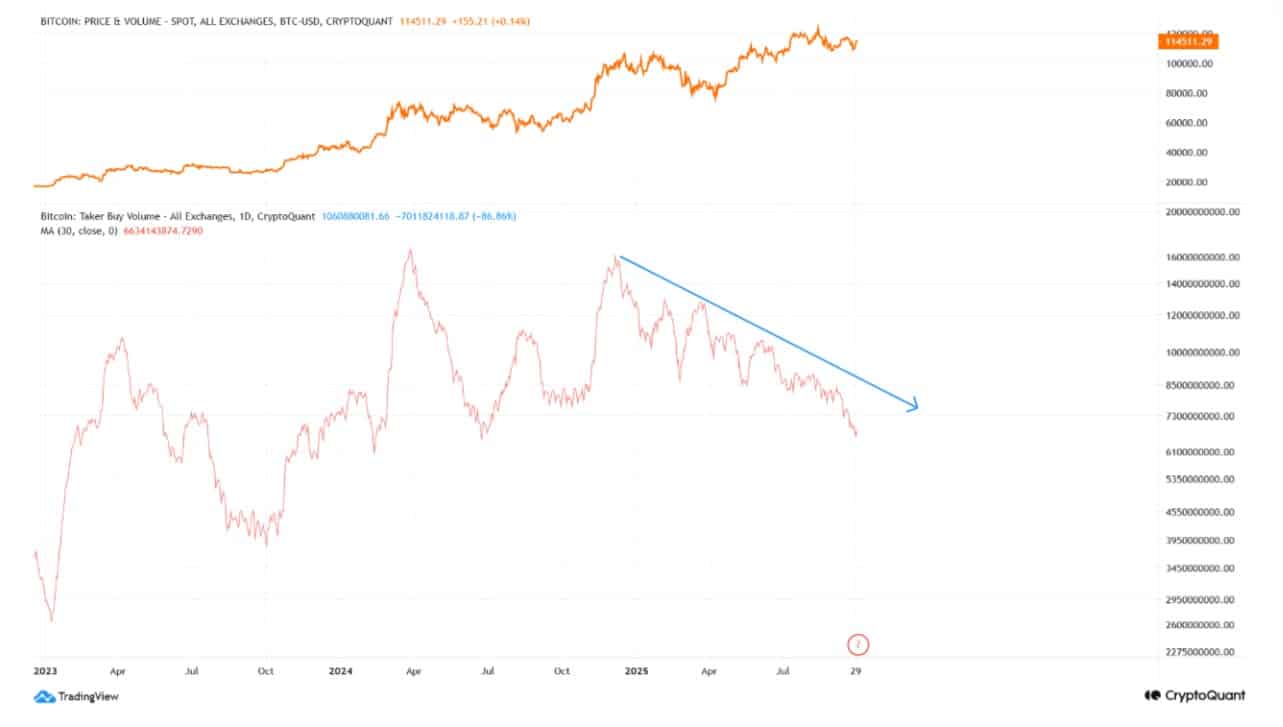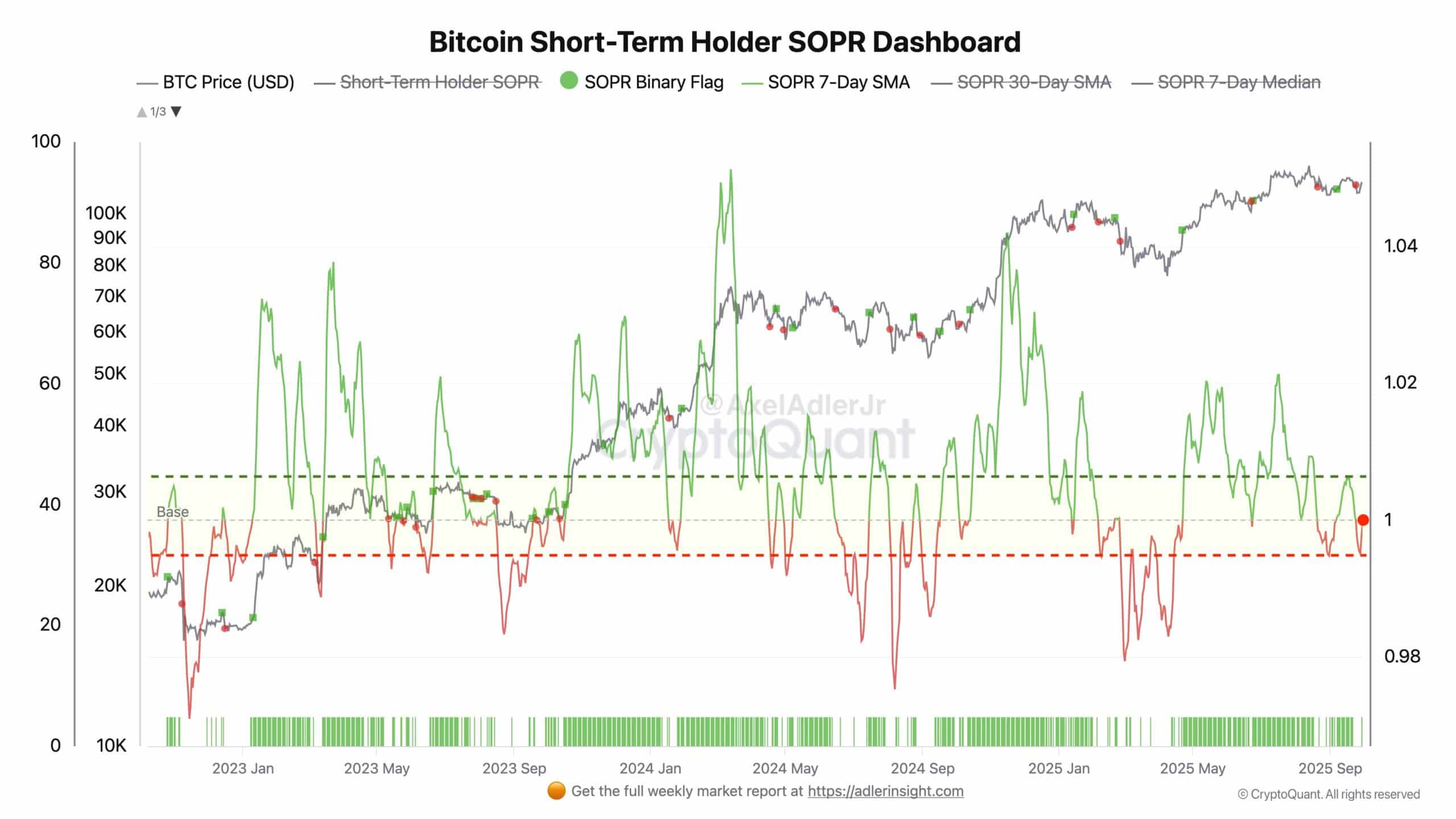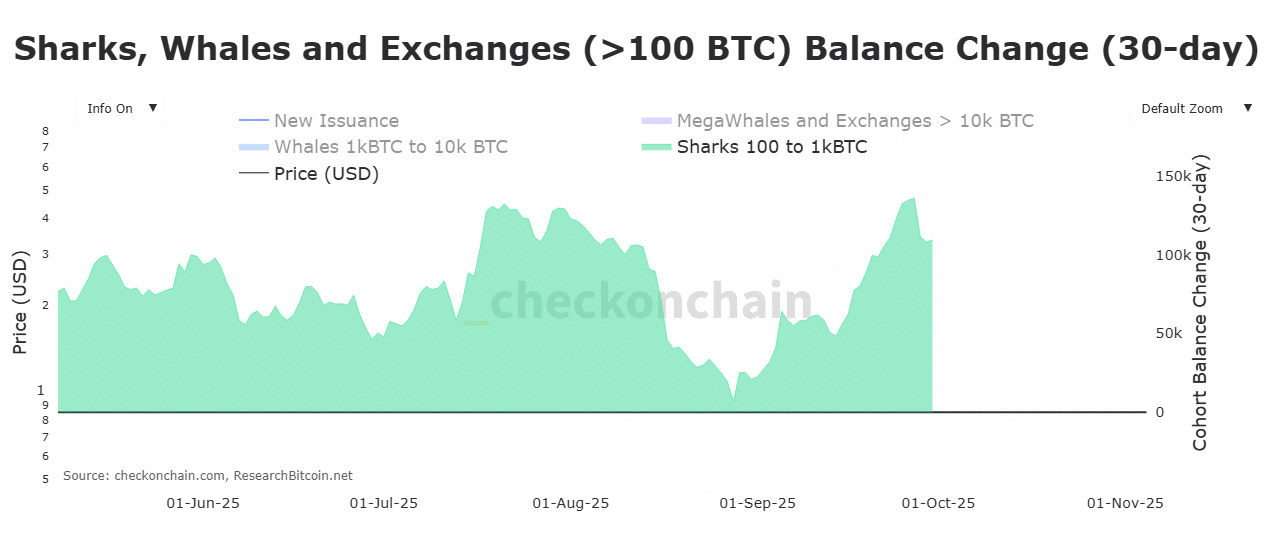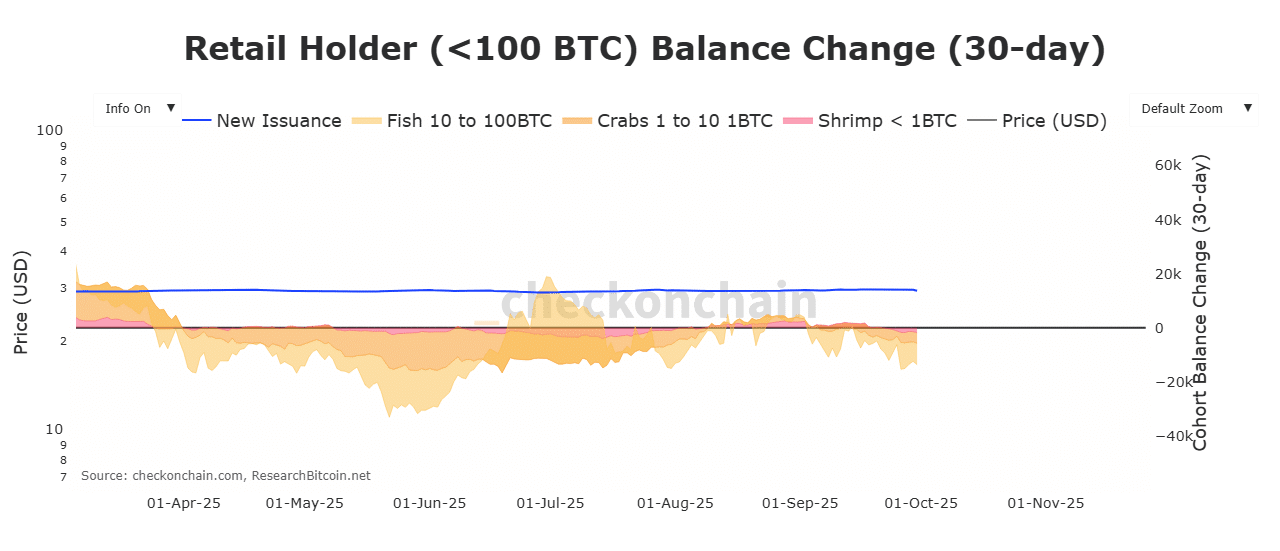Bitcoin taker buy volume has fallen to 2024 lows, signaling weak buyer demand and rising selling pressure; this drop increases the risk of a trend reversal unless buyers push BTC decisively above $114K–$115K.
-
Taker buy volume at 2024 lows — weak demand could foreshadow a reversal.
-
Sharks and retail cohorts are net sellers, increasing short-term downside risk.
-
Key metrics: sustained SOPR below 1 and positive shark exchange deposits (≈109k BTC) point to mounting selling pressure.
Bitcoin taker buy volume drops to 2024 lows, signaling weak demand—read seller cohort analysis and likely price scenarios. Stay informed.
Published: 2025-09-XX. Updated: 2025-09-XX. Author: COINOTAG
What does Bitcoin’s taker buy volume decline mean?
Bitcoin’s taker buy volume decline means frontline buyer activity is shrinking, indicating reduced market conviction and higher vulnerability to price drops. When taker buy volume falls while sell-side metrics rise, momentum often shifts from bullish to neutral or bearish within weeks.
How significant is the recent taker buy volume drop?
CryptoQuant data shows ten consecutive months of falling taker buy volume, reaching early‑2024 lows. This sustained decline is notable because it measures aggressive buy-side execution; prolonged weakness here historically precedes momentum shifts. Exchanges like Binance exhibited the sharpest declines, highlighting concentrated trader caution.
Why is SOPR relevant to Bitcoin selling pressure?
SOPR (Spent Output Profit Ratio) indicates whether spent coins are being sold at profit or loss; a SOPR persistently below 1 shows sellers are realizing losses or not achieving breakeven, which often aligns with selling pressure. Analyst Axel Adler notes SOPR has failed to clear 1 recently, a bearish confirmation of weak buyer follow-through.
Who is selling Bitcoin now?
On-chain cohort analysis shows elevated selling from mid‑sized ‘sharks’ and retail holders. Checkonchain metrics report a Sharks to Exchange Balance Change of +109k BTC (net deposits), while retail holder balances trended negative through September. Smaller wallet cohorts—Fish (-7.9k BTC), Crabs (-3.9k BTC), Shrimps (-1.7k BTC)—also recorded outflows at press time.

Source: CryptoQuant
At the time of writing, BTC traded near $113,541 after a 1.16% 24‑hour gain. Despite the short rebound, the demand side remains fragile and the recent upward move faces headwinds from low taker buy volume and active sellers.
How are wallet cohorts affecting short‑term price action?
Wallet cohort flows influence supply on exchanges. Sharks’ net deposits increase available supply for market sales. Retail negative balance change suggests small‑holder selling or reduced accumulation. Together, these flows increase immediate sell liquidity and pressure price support levels.

Source: CryptoQuant
What are the likely price scenarios for BTC?
Two outcomes are most plausible based on current on‑chain signals:
- Downside scenario: Intensifying seller activity could push BTC below recent support toward $111,054, confirming a short-term reversal.
- Range-bound scenario: If selling and low buying pressure persist in balance, BTC may range between $111K and $114K until a clear catalyst emerges.
What would confirm a sustained uptrend?
Buyers must reassert control by driving a decisive breakout above $114K and securing daily closes near $115K. Sustained increases in taker buy volume and SOPR above 1 would signal renewed demand and reduce downside risk.

Source: Checkonchain

Source: Checkonchain
Frequently Asked Questions
How long can low taker buy volume persist?
Low taker buy volume can persist for months, especially during consolidation or when macro sentiment is neutral. Ten consecutive months of decline suggests structural caution among aggressive buyers rather than a short-lived blip.
Does a SOPR below 1 always mean price will fall?
No. SOPR below 1 signals coins sold on average at a loss, which often accompanies capitulation or distribution. It is a bearish indicator but must be assessed alongside volume, exchange flows, and macro conditions.
Which wallet cohorts should traders watch?
Monitor sharks, whales, and retail cohorts. Sharks’ exchange deposits and retail negative balance changes are currently the clearest near‑term risk signals in the present market environment.
Key Takeaways
- Taker buy volume is at 2024 lows: sustained decline suggests weak buy-side momentum and higher reversal risk.
- SOPR remains below 1: sellers are not consistently profitable, which aligns with distribution pressure.
- Sharks and retail are selling: net deposits and negative retail balance changes increase short-term downside pressure; watch $111K support and $114K–$115K resistance.
Conclusion
Bitcoin taker buy volume and SOPR together paint a cautious near‑term outlook: buyers have not returned in force while sharks and retail cohorts have increased exchange supply. Monitor taker buy volume recovery and SOPR > 1 for signs of a genuine breakout; otherwise, expect possible drift toward $111K or extended range-bound trading between $111K and $114K.
